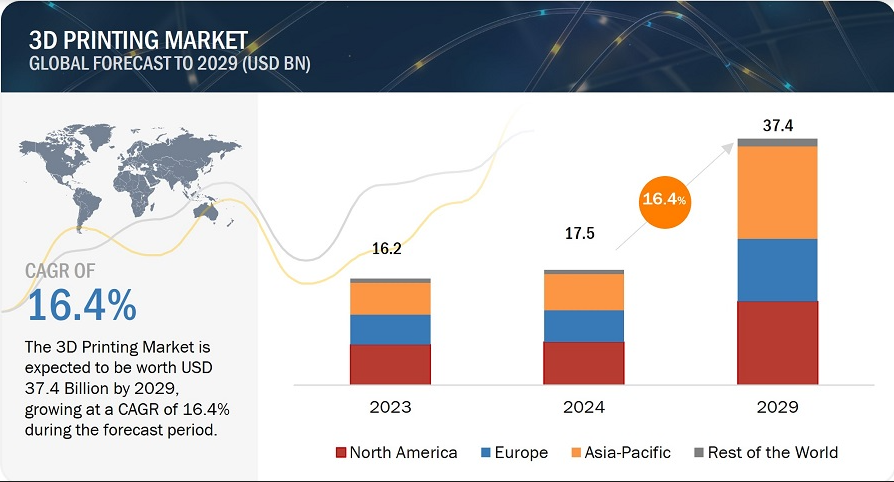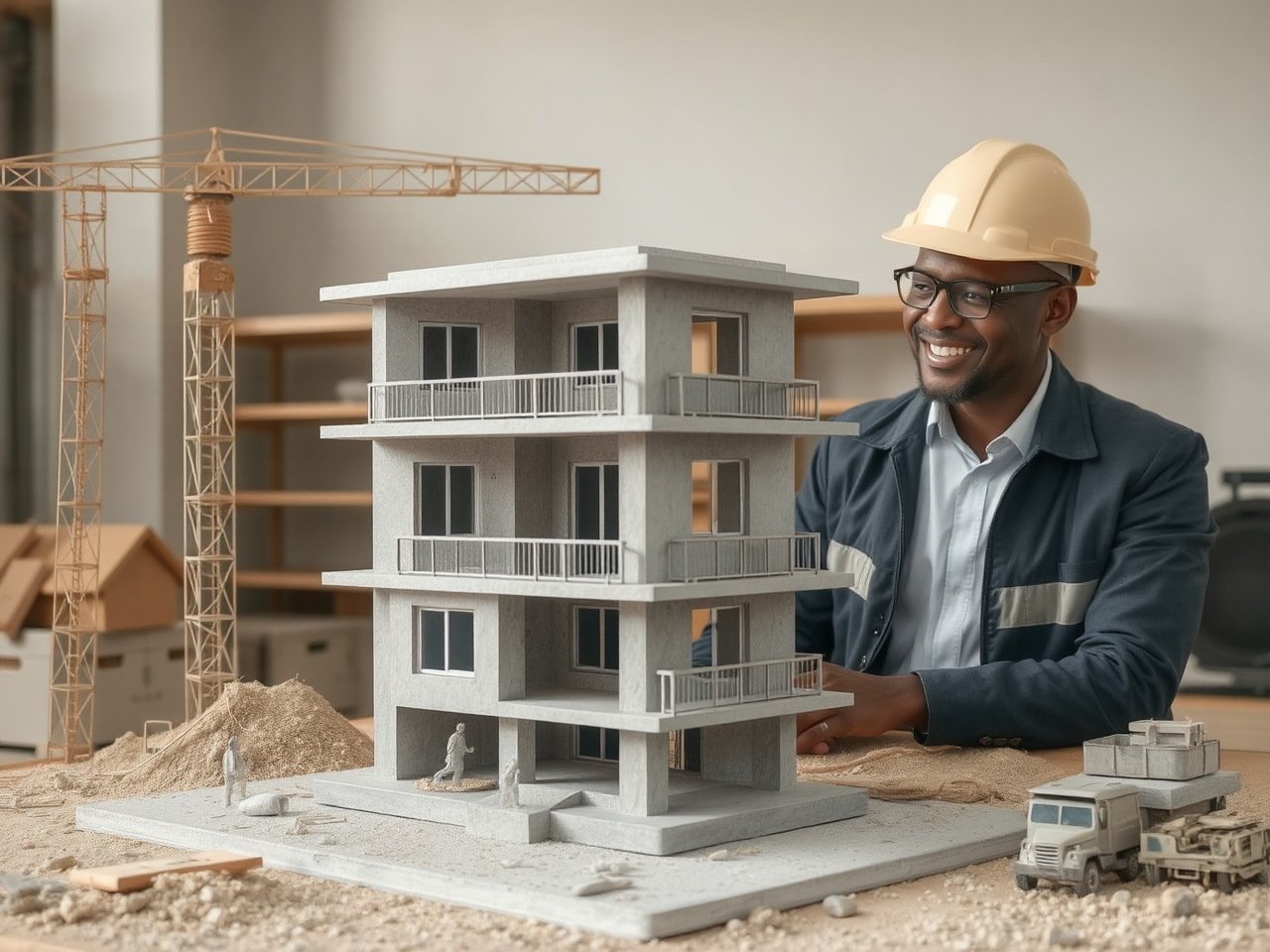In recent years, 3D printing in real estate has taken a change in technology that has turned new ways that will soon revolutionize the construction industry.
From 3D printed houses to massive commercial developments, 3D printing is one of the means by which people build, design, and live within homes nowadays.
This article provides an in-depth look into the realm of 3D construction technology, exploring the benefits that come with this advanced technological approach alongside its challenges and potential for transforming the real estate sector.
What is 3D Printing in Real Estate?
3D printing in real estate, also referred to as additive manufacturing, uses 3D printing technology in creating structures physically, layer by layer. The method involves printing various building materials, such as concrete, composites, and plastics, for construction projects of homes and office buildings.
A robotic construction system can print walls, roofs, and other construction features by accurate deposition of material according to a digital blueprint.
Unlike the traditional system of construction, which relies on cumbersome and labor-intensive processes, 3D printing allows computer-controlled construction solutions that save money and hours.

How Does 3D Printing Work in Construction?
- Design Phase: The architects and engineers create an online digital model of the building with the use of 3D home design software. It then becomes the blueprint for the printer.
- Material Selection: The most widely used is the concrete 3D printing technology because it is durable, but other building 3D printing materials are composite and recycled materials.
- Printing Process: This is achieved using a large-scale 3D printer, where automated 3D house printers adhere to a digital blueprint, layer by layer, in building the structure. Post-processing involves manual work after the main structure has been printed.
It entails the installation of electrical systems, plumbing, windows, and all finishing touches.
Digital construction methods employed by 3D printing ensure better control over material usage, enabling significant savings through reduced waste and increasing efficiency in construction.
Can You 3D Print a Real House?
Of course, yes. One can 3D print a real house nowadays. 3D printed houses are no longer an imagination of some future world.
Actually, several companies all over the world are into constructing 3D-printed homes for very practical uses-both as affordable housing solutions and even commercial purposes.
Case Study: Icon and New Story’s 3D Printed Homes
In 2018, Icon-a 3D printing construction firm-partnered with New Story, a nonprofit charity, to 3D print homes in Mexico. They did so for families in need.
Each of these houses, which are necessary for a family, required only 24 hours to print and cost about $10,000. These have turned into an powerful example of how 3D printing in residential construction can be affordable and efficient.
Advantages of 3D Printing in Real Estate
- Cost-Effectiveness: 3D printed houses can cut construction costs as far down as 30-60%, thereby making affordable 3D-printed housing solutions more accessible.
- Speed: 3D printing reduces construction time by a long shot. Whereas traditional homes take several months in construction, 3D printed homes are capable of being built in a matter of days.
- Personalization: Owner-developer can achieve intricate, unique designs in custom 3D printed houses, which otherwise would not be cost-effective by conventional building methods.
- Sustainability: Sustainable 3D construction uses less material and produces less waste, hence more friendly to the environment in the building process.
How Long Does It Take to 3D Print a House?
Dependent on size, for example, the complexity of the design, and the type of 3D printing technology used. It will take an average of 24 to 48 hours to construct a small 3D printed home.
This time may be extended for larger homes or more intricate designs but is way below the time taken by traditional construction methods.
For example, the Apis Cor-3D construction company managed to break a record and print a 400-square-foot home in Russia in only 24 hours. Such efficiency reflects the advantages of automated solutions for saving time in construction.

What Materials Are Used in 3D Printing Houses?
The most common material used in 3D printed construction is a kind of concrete that is specially developed for the process of 3D printing.
By nature, this 3D concrete printing technology enables it to dry out fast and also forms robust and durable structures. Besides that, other materials used in the 3D printing of building materials include:
- Composites: These are lightweight materials great for custom design features.
- Plastics: These are often used for smaller components or structural details.
- Recycled Material: Some companies have started to find alternatives for sustainable, recycled materials with which environmental damage can be minimized.
With the use of such materials, 3D printed homes will be cheaper but also propose an answer on the path to greener solutions for modern housing problems.
Disadvantages and Challenges of 3D Printed Houses
While the merits of the 3D-printed house options are considered, there are some challenges and disadvantages that need discussion:
- Regulatory Barriers: Building codes are obsolete; they have not considered additive manufacturing in real estate.
- Material Limitation: Other than concrete, all types of material are at development stages to get the strength and versatility enjoyed from traditional materials.
- Skilled Labor: While much of the construction process is automated, 3D printing construction still requires a number of highly skilled technicians to operate the machines and oversee the project in critical areas.
Life Span and Durability of 3D Printed Homes3D printed homes are created from durable materials like concrete, and thus their life span is nearly equal to that compared with traditionally built homes.
Indeed, the concrete 3D printed homes could stand for decades if properly serviced. Besides, the 3D construction technology improves day by day, so its strength and endurance are continuously enhanced too.
3D Printing-Real Estate Market Trends
The 3D printed housing market has been in a phase of rapid expansion, with estimates suggesting that it will continue to see significant growth throughout the next decade.
The 3D printing in real estate market is expected to grow USD 37.5 Billion at a CAGR of 16.4% by 2029, driven by rising demand for affordable homes and innovative construction solutions.
 Image source: Marketsandmarkets
Image source: Marketsandmarkets
Leading Countries in 3D Printed Homes
The folowing are several countries believed to be leading in 3D printed home construction:
- Netherlands: The home of the world’s very first 3D-printed commercial building, the Dutch are indeed pushing the boundaries of 3D printing in architecture.
- United States of America: With companies like Icon and Apis Cor pioneering large-scale 3D printed home developments.
- China: Leading in large-scale 3D printing with whole apartment complexes having been printed using the new technology.
Investment Opportunities in 3D Printed Real Estate
As 3D printed real estate develops, so do investment opportunities. Businesses building 3D-printed homes and even 3D printing real estate companies seek out investors to jump on this revolutionary technology.
With reduced construction costs, faster build times, and sustainable design, potential growth in 3D printing real estate investment is great.
 A modern 3D printing in Real estate
A modern 3D printing in Real estate
Is 3D House Printing a Good Investment?
It is, therefore, a very prudent decision on the part of developers, builders, and investors to venture into 3D printed real estate. Some of the main reasons why 3D printed housing is considered a very attractive market include:
- Lower Construction Costs: Printing homes using automated 3D house printers saves on labor and material costs.
Scalability: With every passing day, the 3D printing technology is evolving, and a time will come when scaling up production and building a whole neighborhood with 3D printing becomes quite realistic. - Sustainability: The main reason investors consider eco-friendly and sustainable building solutions is that 3D printed homes are increasingly attractive.
Conclusion: Future of 3D Printing in Real Estate
3D printing in real estate is among the most affecting ways that change our approach to construction and housing. 3D printed construction is going to play an enormous role in the future of housing because of all the possibilities it opens for constructing homes in an affordable, sustainable, and personalized way.
As the technology continues to evolve, 3D printed homes will be more frequent, helping to solve part of the global housing crisis while driving innovation in the construction industry.
If interested in learning more about 3D printing in real estate, a deeper look at resources such as Icon Build and Apis Cor could be very beneficial in terms of further exciting developments within the field.
Pease Also Read:





